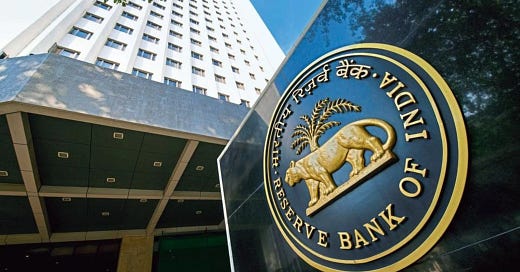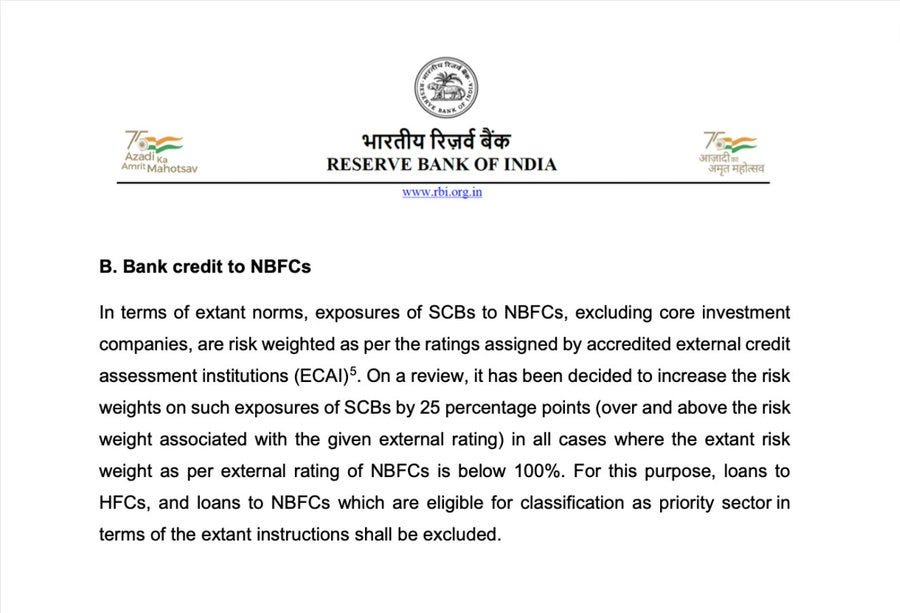Two Cheers for RBI's Risk-Weight Enhancement
RBI's New Measures to Mitigate Unsecured Loan Risks Fail to Consider the Changing Habits of India's Growing and Aspirational Middle Class.
Introduction to RBI's Risk Weight Hike
The Reserve Bank of India (RBI) has taken a significant step towards tightening the financial landscape by increasing the risk weights on unsecured consumer loans, including credit cards, for both banks and Non-Banking Financial Companies (NBFCs). This decision, aimed at countering the rapid growth in unsecured retail loans, will raise the risk weights by 25%, thus impacting the capital requirements for these institutions.
Enhanced Risk Management for Consumer Loans
The RBI's directive necessitates that both outstanding and new consumer credit exposures of commercial banks, and retail loans of NBFCs, with the exclusion of housing, education, vehicle loans, and those secured by gold, will now attract a 125% risk weight as opposed to the previous 100%. This strategic move is expected to result in heightened capital requirements for lenders, leading to an increase in lending rates for borrowers. This measure is specifically targeted towards NBFCs in the personal and consumption loan segments to augment their capital buffers.
Banks' Exposure to NBFCs
Furthering its cautious approach, the RBI has also mandated a 25 percentage point hike in risk weight for loans provided to NBFCs, excluding core investment companies. This adjustment will apply only if the current risk weight, based on the external credit rating assigned to the NBFC, is below 100%. Loans to housing finance companies (HFCs) and those eligible for classification as priority sector are exempted from this increase.
Implications for Bank and NBFC Growth
These revised risk weights are expected to somewhat curb the growth of NBFCs by increasing their cost of funds, and potentially drive demand for securitisation and co-lending. Banks, especially those with sufficient capital headroom, may reconsider their lending strategies, potentially slowing down the pace of consumer credit and NBFC loans.
Impact on Consumer Credit and NBFC Borrowing
The regulatory changes are anticipated to lead to a decrease in consumer credit volume in this high-return segment, possibly affecting the profits of banks and NBFCs. There's also a possibility of a slight increase in Non-Performing Assets (NPAs) in consumer loans. Moreover, the reliance of NBFCs on bank borrowings is expected to be significantly impacted, compelling them to seek alternative funding sources, such as bond issues and securitisation.
Contrary View: Questioning RBI's Conservative Approach
(i) Perceived Overreach by the RBI
Some market observers have raised concerns over the Reserve Bank of India's recent decision to increase the risk weights on unsecured loans extended by NBFCs, calling it an overreach and a reflection of the RBI's traditional conservatism. Critics argue that this move, especially under a bureaucratic leadership, may not fully grasp the evolving dynamics of the modern financial sector. They point out that while the RBI's intentions are to mitigate risk, the approach might be excessively cautious, potentially stifling the growth and adaptability of NBFCs.
(ii) The Argument for NBFCs' Due Diligence
Contrary to the RBI's stance, it is argued that NBFCs often exhibit more diligence in their lending practices than traditional banks. These market observers highlight that NBFCs' so-called unsecured loans are, in many cases, more secure than those extended by banks to the formal corporate sector. They refer to the significant amount of bad loans accumulated by banks, despite being secured against assets and personally guaranteed by promoters and directors. For instance, data until the end of September shows that the Insolvency and Bankruptcy Code (IBC) has been involved in 2,289 insolvency applications since 2019, involving corporate debts totalling ₹1,63,916 crore, demonstrating the extensive reach and impact of the law.
(iii) The Security in NBFC Lending Practices
Furthermore, critics of the RBI's policy note that NBFCs are selective in choosing their customers, often focusing on government employees or individuals working for reputable private sector companies. They point out that the practice of obtaining post-dated cheques from borrowers makes these loans effectively secured, as the bouncing of such a cheque is an offence under Section 138 of the Negotiable Instruments Act. This method of securing loans, they argue, mitigates the risk significantly more than the conventional collateral-based security offered in bank loans.
(iv) Ignoring the Spending Habits of the Younger Generation
Additionally, there is a belief that the RBI is not adequately recognising the saving and spending habits of the emerging younger generation, who are comfortable with consumer debt, typically settling it with their monthly salary cheques. In a scenario where dual-income households are becoming more common, this criticism suggests that the RBI is failing to acknowledge the growing financial capability of the middle and upper-middle classes. By restricting the flow of credit, the RBI could inadvertently lead to higher interest rates in the consumer unsecured debt market, ultimately doing a disservice to this growing consumer class and potentially slowing down economic growth.
Conclusion: Assessing the Impact of RBI's Policy on Unsecured Loans
The RBI's increase in risk weights for unsecured loans strikes a delicate balance between ensuring financial stability and acknowledging the evolving dynamics of NBFCs and consumer behavior. While this conservative approach aims to fortify the financial system against potential risks, it also raises concerns about possibly stifling NBFC growth and overlooking the modern consumer's adeptness at managing debt. Therefore, a nuanced understanding is essential, one that appreciates the RBI's intent for systemic safety while considering the need for adaptable regulations in a changing financial landscape.











